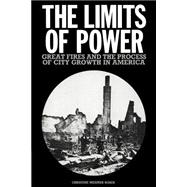
Note: Supplemental materials are not guaranteed with Rental or Used book purchases.
Purchase Benefits
What is included with this book?
| List of figures and tables | |
| Acknowledgments | |
| Part I. The Conceptual Framework: 1. Introduction | |
| 2. The barriers to structural improvement | |
| 3. The barriers to infrastructural improvement | |
| 4. The barriers to spatial change | |
| Part II. Three Case Studies: 5. Theory and narrative history | |
| 6. The rebuilding of Chicago | |
| 7. The rebuilding of Boston | |
| 8. The rebuilding of Baltimore | |
| Part III. Conclusion: 9. Power in the city | |
| Notes | |
| Sources of illustrations | |
| Index. |
The New copy of this book will include any supplemental materials advertised. Please check the title of the book to determine if it should include any access cards, study guides, lab manuals, CDs, etc.
The Used, Rental and eBook copies of this book are not guaranteed to include any supplemental materials. Typically, only the book itself is included. This is true even if the title states it includes any access cards, study guides, lab manuals, CDs, etc.